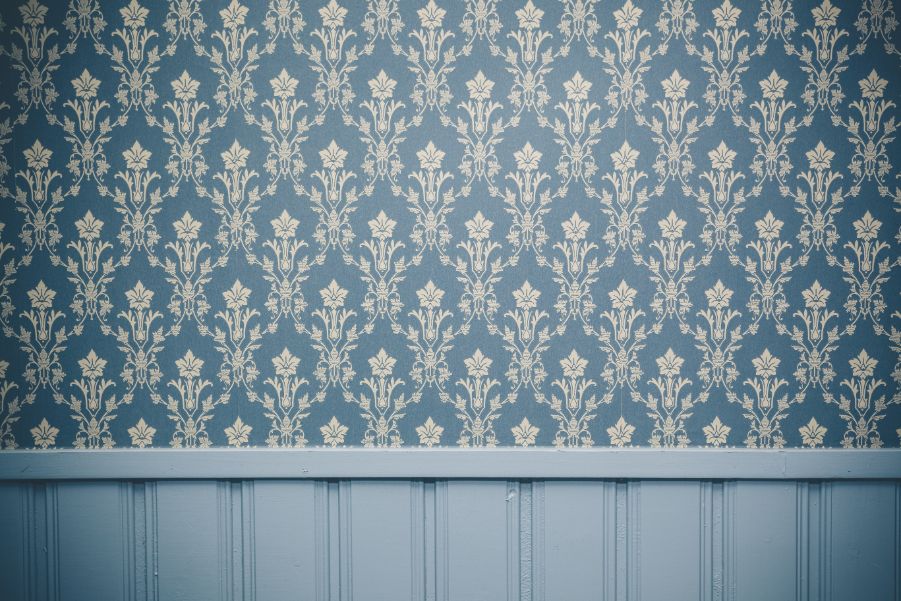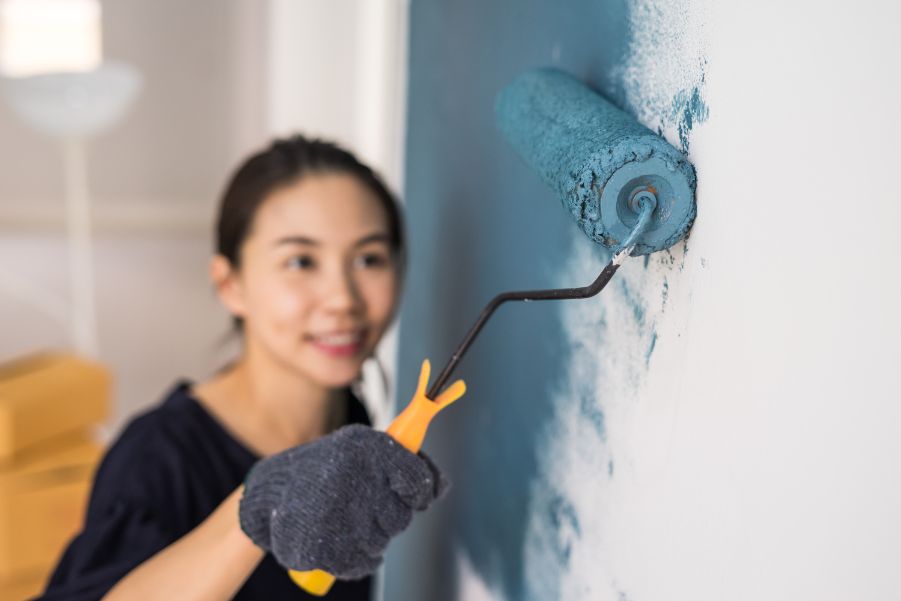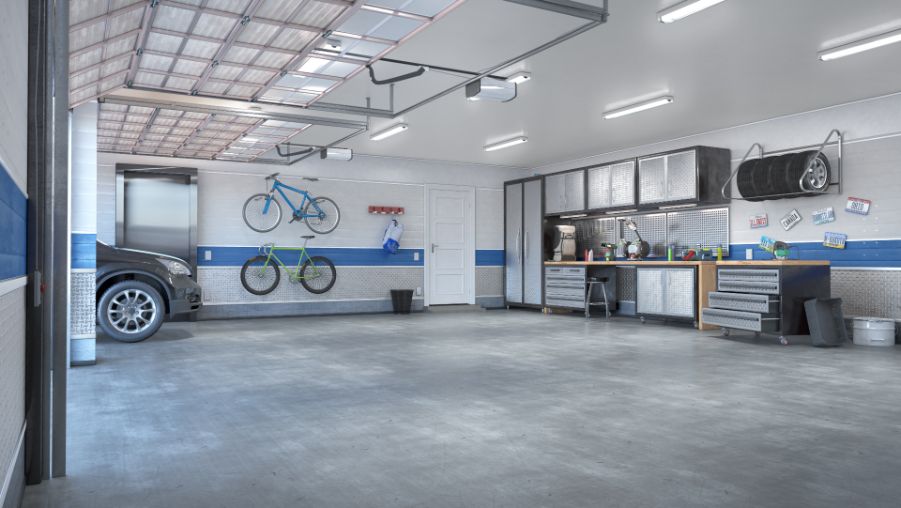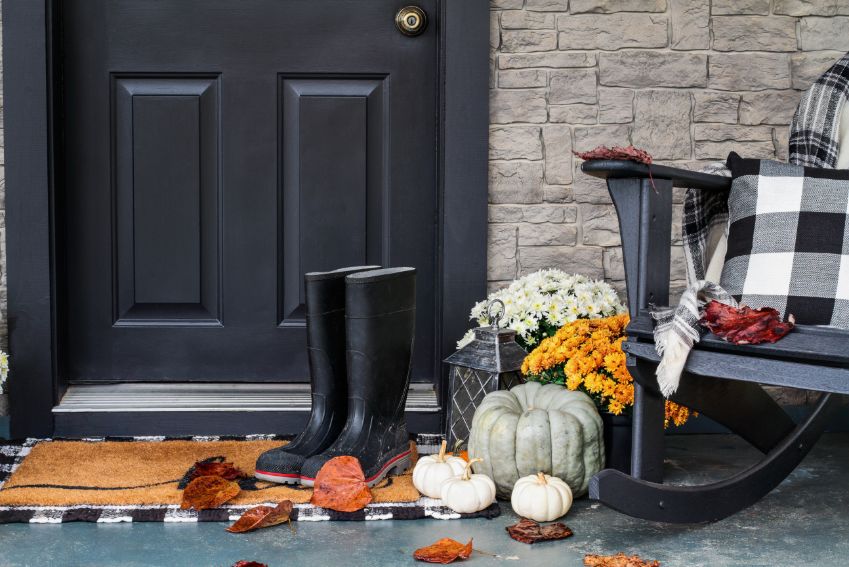Can You Paint Over Wallpaper? Here’s All You Need To Know

Your new home has a spacious backyard, open floor plan, gorgeous wood floors — and dining room wallpaper circa 1994. But, if removing the wallpaper is a challenge you’re not up to, we have some good news for you. You can paint over wallpaper. By following a few simple rules to prep and prime the walls, you can transform your previously wallpapered room into a blank, fresh canvas. Read on to find out if painting over wallpaper is the right solution for you and the steps you need to take to make it a successful project.
Is Painting Over Wallpaper the Right Solution for You?
While painting on top of wallpaper can be done, there can also be exceptions. Before investing in paint, supplies, and time, learn more about when you should and shouldn’t paint over wallpaper.
When Not to Paint Over Wallpaper?
If this is your forever home, or if you know you will be living there for the long term, it’s worth exploring stripping the wallpaper before you paint. However, stripping wallpaper does come with its issues, including revealing old nail holes, degraded drywall or plaster, and the potential that the wallpaper layer you’re staring down may be one of many.
If the wallpaper is textured, painting over is not the best choice, as the pattern will show through the paint. If the wallpaper is a dark, saturated color, you also risk this color showing up overtime under the paint. Regardless of the color or the texture, all wallpaper has seams, which will also show through the paint.
When You Can Paint Over Wallpaper
Stripping wallpaper can be time-consuming, and you can accidentally gouge the walls. This can be especially true if the paper is old and stubborn. If you’ve already tried stripping the paper and it’s not coming off easily, don’t risk damaging the walls.
Also, if the room you’re painting is small, like a bathroom or home office, the time and labor you spend stripping the paper may not be worth it.
Smooth, light-colored wallpaper is the best canvas to paint over. However, your prep work will make the most significant impact on your painting success.
Supplies You’ll Need To Cover Wallpaper
Having the correct supplies will make all the difference in your success painting your wallpapered walls. Painting over wallpaper requires you to work with various chemicals, so it’s essential to protect your eyes, skin, and hair before you begin. Below is a supply list for painting over old wallpaper:
- Clothes and shoes that cover as much skin as possible, including long-sleeve clothing
- Disposable gloves (rubber or vinyl work well)
- A hat
- Eye goggles (if you wear glasses, get the kind that fit over them)
- Bucket of warm water
- TSP (trisodium phosphate)*
- Soft cloths
- Putty knife
- Wallpaper seam adhesive/spackle (as needed)
- Sandpaper (150 to 180-grit)
- Painters tape
- Oil-based primer*
- Brushes and roller
- Mineral spirits*
- Topcoat paint of your choice*
- Can link to DIY site here
*Please refer to the Product Label, Technical Data Sheet (TDS) or Safety Data Sheet (SDS) for safety and detailed application instructions
Prep the Room
To prep the room for paint, the first step is to clean your walls with a damp rag to remove any dirt and dust. Moisten the rag to avoid saturating the paper. Then, tape the trim and around the floors and move or cover the furniture.
Once the walls are clean, repair peeling areas or exposed seams by carefully trimming off the paper with a sheetrock knife and paint primer over the spot to seal it. After you’ve sealed the paper, let it dry, spackle any holes or dings in the wall, and sand the walls with 150 -180 grit sandpaper to even out the surface. Then wipe the walls once more with a damp cloth to get rid of any new dust.
WARNING! If you scrape, sand or remove old paint, you may release lead dust. LEAD IS TOXIC. Contact the National Lead Information Hotline at 1-800-424-LEAD, or log on to www.epa.gov/lead
Paint Over Your Wallpaper
Once your protective gear is on, and the walls are clean and smooth, it’s time to apply the primer. Avoid overloading the brush. Instead, start with less and build up. Once the primer is dry, check for rough spots and make any repairs with spackling compound by blending spackle and primer. Investing in high-quality products and taking your time should only require one coat of primer. Before painting the walls, test a small patch out of eyesight to be certain you don’t need another coat of primer and determine how many coats of paint you will need to fully cover the wallpaper.
To answer the question, can you paint over wallpaper? Yes, if you follow a few easy rules for prepping and priming first, your paint project will succeed. Are you looking for an interior painter in your area? Try our wallpaper installation and removal services. We can help you transform your home with a new coat of paint or some wallpaper!



